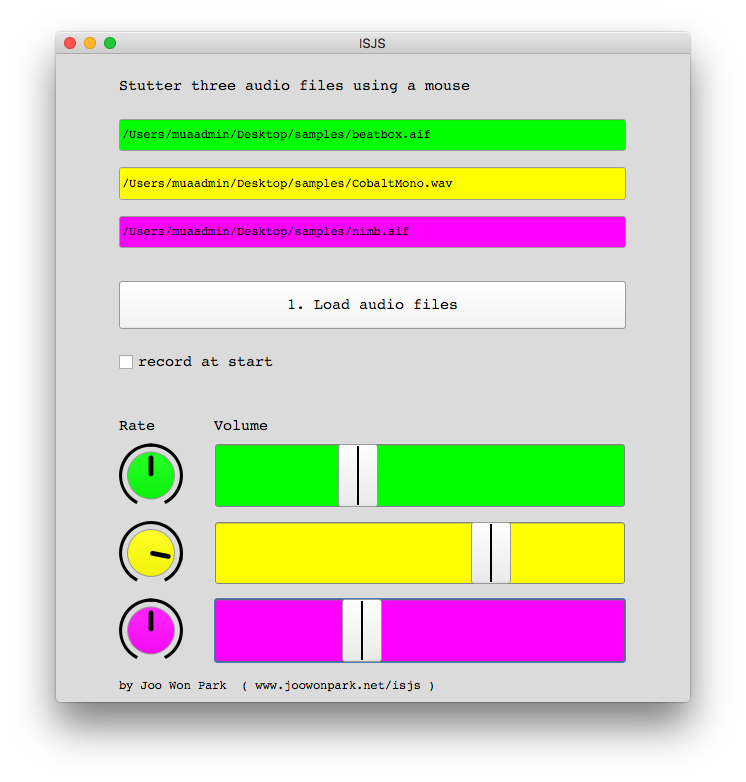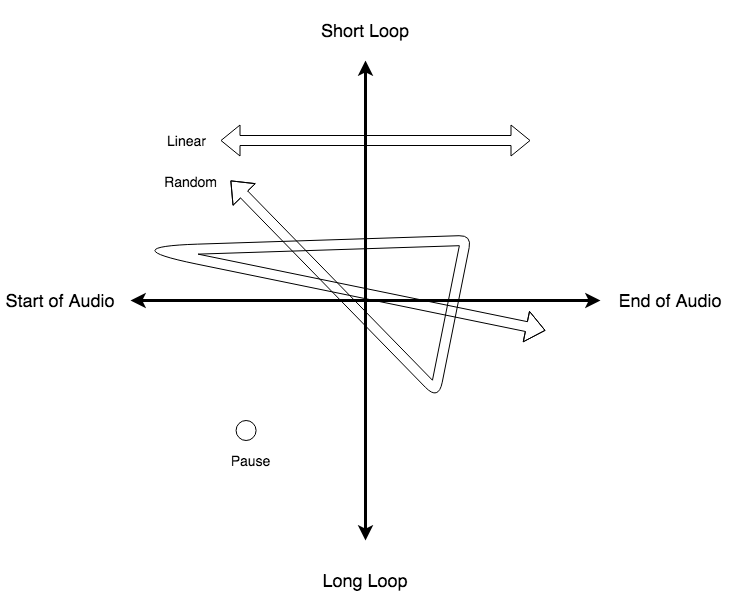ISJS stands for I-Shim-Jun-Shim (이심전심, 以心傳心), a Korean word for “communicating through the hearts,” or in my interpretation, “empathy.” Featured sounds are recordings by collaborators, students, and family members. I often communicate with them without saying a word. The usual medium to do so is music, but sometimes it is a nod, smirk, sigh, eye contact, or eating in silence. You know.

ISJS app and SuperCollider patch are free and available to download. Please give proper credit if you use it in your project.
- Download ISJS App (for Mac OSX) here
- Download SuperCollider patch (for Mac & PC) here
- Computer Music Practice Examples -ISJS

Performance Instruction
A mouse is a sole instrument for ISJS. Improvise the mouse cursor position in three different types of motions for rehearsal and performance.
- Pause: Stay in one position. Focus on presenting a recognizable rhythmic pattern
- Linear: Move from one point to another in a straight line. Focus on presenting a single predictable change, such as change of timbre or increase in loop duration
- Random: Move randomly. Focus on presenting unpredictable, abrupt gestures
Take freedom in the speed of the movement. Find coordinates of the Pauses that would work well. End in a Pause position
ISJS is a part of Computer Music Practice Examples Project.
